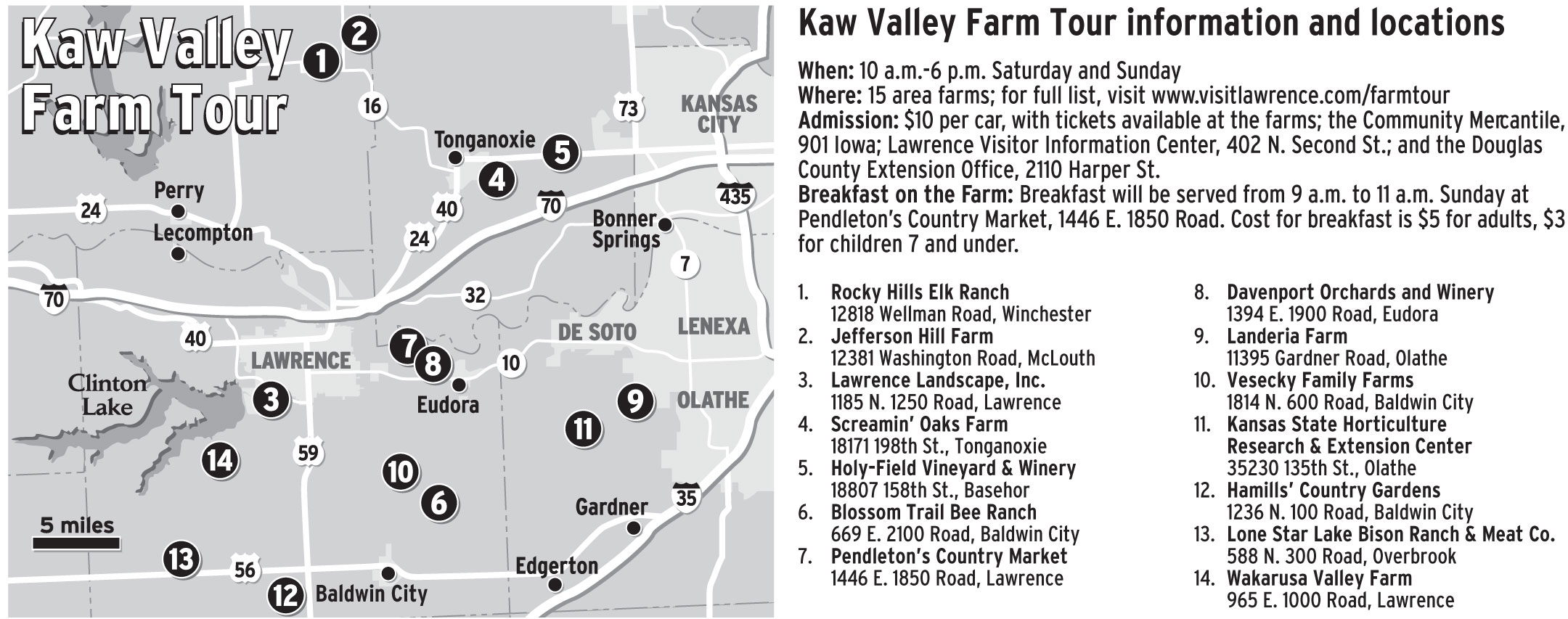Ahead of the herd
Farm expands production of gourmet goat cheese

At Landeria Farm, six miles south of De Soto, goats line up for their morning milking and feeding routine. Farm owner Kathy Landers makes goat cheese and goat milk from the herd. The farm is among 15 on this year's Kaw Valley Farm Tour, which runs Saturday and Sunday.

De Soto ? The first thing you notice at Landeria Farm, aside from the surround-sound bleating of goats, is the big mound of dirt that climbs the side of a barn.
It’s not the remnants of an earth-moving construction project – it’s the top of what is perhaps the only cheese-aging cellar in northeast Kansas.
It’s also a sign of what is to come at the farm, which is rapidly expanding its operation in hopes of shipping goat cheese across the country.
“The cheeses are to die for,” says farm owner Kathy Landers. “They’re wonderful.”
Landers’ farm, which is six miles southeast of De Soto, is among the 15 farms included in this year’s Kaw Valley Farm Tour, which runs Saturday and Sunday.
It’ll be the first and last chance for visitors to tour the entire new Landeria Farm facility, which is still under construction. Once it’s done, Landers says, federal regulations prohibit visitors in the areas where cheese is made and stored.
Landers has been making cheese since the early ’70s, and she’s been at this location since 2000.
But she’s mostly sold cheese from her farm. With the new facility, she’s looking to change that, and she says she’s had many phone calls from outlets looking to sell her cheese.
“My husband was getting tired of having cheese hanging around the house and in the refrigerator,” Landers says. “I had to decide: We could either get bigger, or get smaller.”
So she decided to grow her operation.
She now has about 100 goats, 30 of those she milks twice a day (only recently did Landeria Farm start using a mechanical milker instead of doing it by hand). She gets about 130 gallons of milk a day.
The process of making cheese varies, depending on which of 15 varieties of cheese Landers is making.
Broadly speaking, Landers makes three types of cheese, which she sells for $12 to $16 a pound:
¢ Fresh cheeses, such as chevre.
¢ Hard cheeses, such as Swiss.
¢ Soft cheeses, such as brie and camembert.
Cheese-making involves a process that involves culturing milk, cutting the mixture into cubes and aging it – anywhere from no aging to months or years, depending on the type of cheese.
The taste of cheese is influenced by such minute details as the type of soil they’re grazing on, the nutrient content of the alfalfa they’re eating and even what time of the year it is.
“You can’t just look at a recipe,” Landers says. “It’s not three pinches of this and two pinches of this. You’re always making adjustments in cheese-making. It’s why there are master cheese-makers. I’m always telling people, ‘There isn’t a recipe. It’s just a guideline.’ It’s not like making a cake.”
Some of her customers, she says, just like the taste of goat cheese. Others find it more easily digestible than cheese made with cow milk.
“When they realize they can have dairy, they realize they can start eating things like pizza,” Landers says. “Some people think about goat’s milk and it’s, ‘Oh, dear.’ They get freaky about it. But they don’t think that about cheese.”
And even if they are hesitant to try, Landers says one taste usually wins them over.
“The bottom line is we’re not Kraft,” she says. “If you look at the flavor profile of aged cheese, there’s an incredible difference. Kraft is a one-note cheese. This is a symphony.”
Even though it’s a lot of work, Landers says it’s a fun process.
She especially likes being around her goats, who sport names such as Violet, Destiny and Lana.
“They’re the perfect crossover livestock – they’re between livestock and a pet,” Landers says. “They don’t bark or bite, and they give milk. What’s not to like?”

